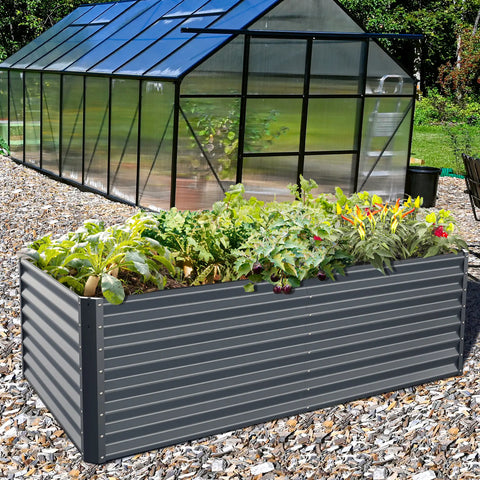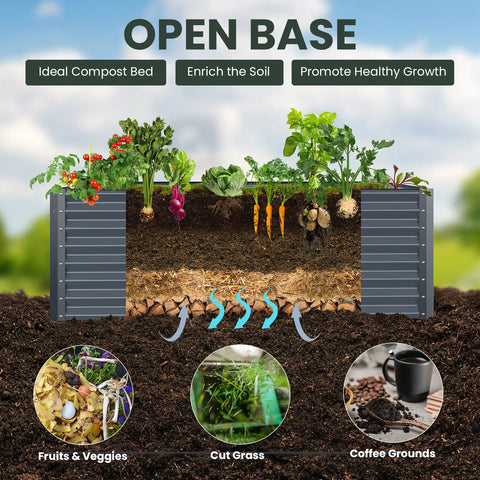The depth of the soil is a very important consideration when designing and building a planted garden. For raising the depth of the soil in the garden bed, consideration needs to be given to the growth needs of the plant, the range of the root system, and water and nutrient retention. Improving soil depth in garden beds is a key decision, as it directly affects plant growth and yield. Here are some details on how to improve the depth of your garden bed soil.

First, different plants have different requirements for soil depth. Vegetables and herbs have relatively shallow root systems, generally requiring a soil depth of 6 to 12 inches (15 to 30 cm). This includes common vegetables like tomatoes, lettuce, and peppers. The roots of these plants are mainly located in the top layer of the soil, so relatively shallow soil depths can meet their growth needs.
However, some root plants, such as carrots, potatoes and Onions, need deeper soil. Their roots grow downward, so they need a soil depth of 12 to 18 inches (30 to 45 cm). This soil depth can accommodate their roots, helping them grow robust rhizomes.

For fruit trees or shrub plants, their roots go deeper into the soil. In general, fruit trees require a soil depth of 18 to 24 inches (45 to 60 cm) for their roots. This depth of soil provides enough space for roots to grow and absorb sufficient water and nutrients.
Secondly, the range of root growth is also one of the factors that determine soil depth. The root system is the main part of the plant that absorbs water and nutrients, so it needs enough space to grow. In general, the root system extends 2 to 3 times the height of the plant. For example, if a vegetable plant is 12 inches (30 cm) tall, its root system will likely grow in a depth range of 24 to 36 inches (60 to 90 cm). Therefore, in order to meet the growth needs of plants, the depth of soil in garden beds should take into account the growth range of roots.

Finally, proper soil depth helps with water and nutrient retention. Soil that is deep enough can hold more water and nutrients and help it retain and drain. If the soil is not deep enough, water and nutrients may be quickly absorbed and evaporated, leaving plants short of water and nutrients. By providing the right soil depth, we can help plants get enough water and nutrients to promote their growth and development.
In summary, the depth of soil for lifting garden beds should be determined according to the growth needs of the plants, the range of roots to grow, and water and nutrient retention. Understanding the growth needs of different plants, combined with the growth range of roots and water and nutrient requirements, can design the appropriate soil depth. By providing the right soil depth, we can help plants get enough water and nutrients to promote their healthy growth and harvest.









